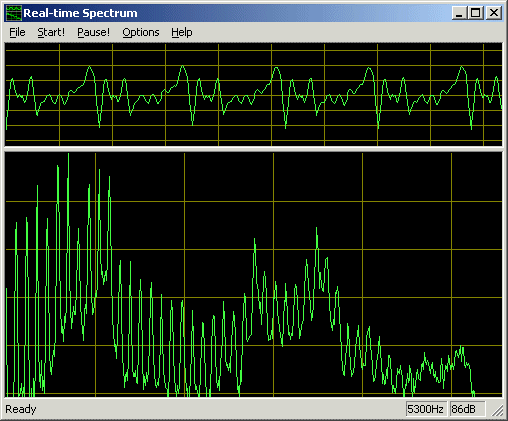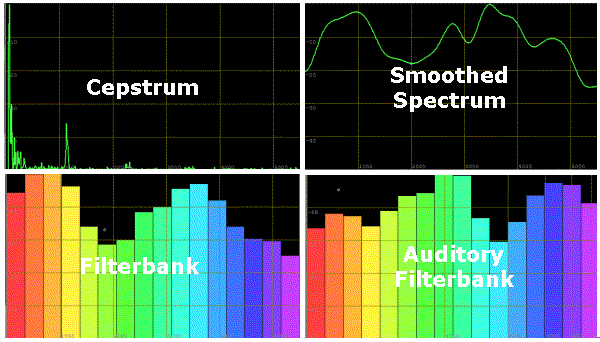
SFS/RTSPECT Version 2.4
Windows Tool for Real-time Waveforms & Spectra
RTSPECT is a free program for displaying a real time waveform and spectrum display of an audio signal. With RTSPECT you can monitor the waveform and spectral shape of sounds being played into the computer's microphone or line input ports. RTSPECT can display one or two-channel audio signals.

Release Notes
- Version 2.6 - January 2013
- Added cepstrum, smoothed spectrum, filterbank and auditory filterbank displays.
- Version 2.4 - November 2006
- Redesigned print layout with support for title
- Version 2.2 - November 2003
- Improved spectrum amplitude display.
- Version 2.1 - July 2003
- Option to set dynamic range.
- Version 2.0 - September 2002
- Add configuration options for sampling rate, frame rate and printing.
Sample Spectral Displays

Download and Installation
SFS/RTSPECT is only available from:
Download the file called rtspect260.exe into a temporary directory. Then find and run the file to unpack and install.
Want to learn more?
If you find the study of speech interesting, why not visit the Internet Institute of Speech and Hearing at www.speechandhearing.net ? There you will find tutorials, laboratory experiments, reference material, and details of e-mail lists and discussion groups.
Feedback
Please send suggestions for improvements and reports of program faults to sfs@pals.ucl.ac.uk.
Please note that we are unable to provide help with the use of this program.
Copyright
RTSPECT is not public domain software, its intellectual property is owned by Mark Huckvale, University College London. However RTSPECT may be used and copied without charge as long as the program and help file remain unmodified and continue to carry this copyright notice. Please contact the author for other licensing arrangements. RTSPECT carries no warranty of any kind, you use it at your own risk.


